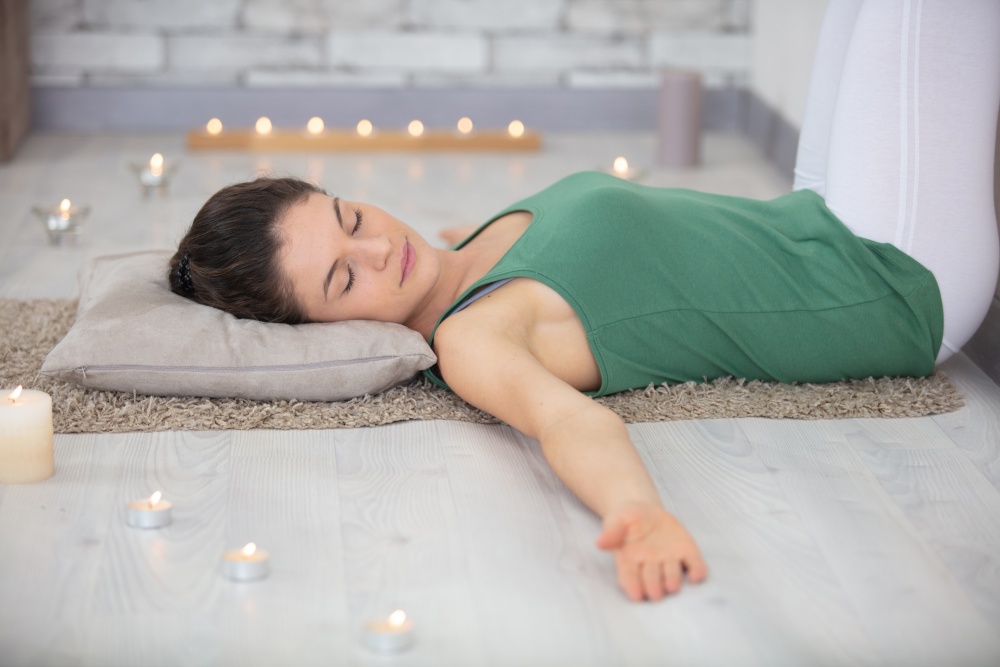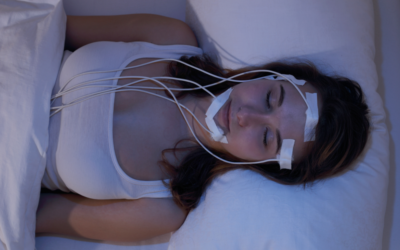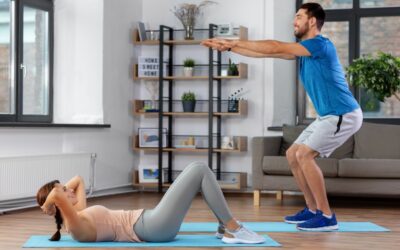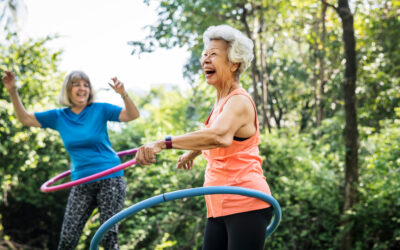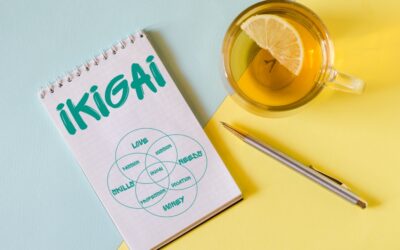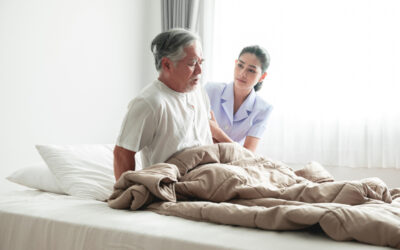In today’s fast-paced and stress-ridden world, finding effective methods to promote relaxation and restore balance in our lives has become paramount. One technique that has gained considerable recognition in recent years is Progressive Muscle Relaxation (PMR). PMR has the potential to offer a simple way to release tension, reduce stress, and enhance overall well-being.
In this article, we will delve deeper into the practice of Progressive Muscle Relaxation and explore its many health benefits. We will also provide step-by-step instructions on how to perform this technique effectively, ensuring that you can harness its transformative power and enhance your overall well-being.
Progressive Muscle Relaxation (PMR) Background
The concept of Progressive Muscle Relaxation was first developed in the early 20th century by Dr. Edmund Jacobson, a pioneering American physician and psychiatrist. Driven by his belief that the mind and body are intimately connected, he created a systematic approach to help individuals alleviate physical and mental stress through muscle relaxation.
What are the health benefits of PMR?
Not only does PMR offer immediate relief from stress and anxiety, but it also provides a range of long-term health benefits. Research has demonstrated its effectiveness in managing various conditions, including chronic pain, sleep quality, and even symptoms associated with depression and anxiety disorders.
One of the greatest advantages of Progressive Muscle Relaxation is its accessibility. Unlike some other relaxation techniques that may require extensive training or special equipment, PMR can be practiced by anyone, anywhere, and at any time. It requires only a few minutes of focused attention, making it a versatile tool for incorporating relaxation into our daily routines.
How Does Progressive Muscle Relaxation Work?
Progressive Muscle Relaxation (PMR) works by systematically tensing and then relaxing different muscle groups throughout the body. The technique aims to bring awareness to the sensations of tension and relaxation, allowing individuals to recognize and release muscular tension more effectively.
Progressive Muscle Relaxation Step-By-Step Instructions
- Preparation: Find a quiet and comfortable space where you can relax without distractions. Loosen any tight or restrictive clothing and get into a comfortable posture, such as lying down or sitting in a supportive chair.
- Muscle Group Sequence: Begin the practice by focusing on one muscle group at a time, moving progressively throughout the body. The usual sequence starts with the muscles in the hands and forearms, gradually progressing upward to the shoulders, neck, face, and finally the lower body, including the thighs, calves, and feet.
- Tensing Phase: Once you bring your attention to a specific muscle group, intentionally contract and tense those muscles for approximately 5 to 10 seconds. Make sure the tension is deliberate and controlled, but not to the point of discomfort or pain.
- Release and Relaxation Phase: After tensing the muscles, release the tension abruptly and completely. As you let go, focus on the sensations of relaxation and the contrast between tension and relaxation in the muscle group. Allow the muscles to become loose, limp, and free of any residual tension.
- Awareness and Mindfulness: Throughout the process, cultivate a sense of awareness and mindfulness. Pay attention to the physical sensations associated with both tension and relaxation. Notice how different muscle groups feel when they are tense versus when they are relaxed.
- Progression and Repetition: Move through each muscle group systematically, progressing from one area of the body to another. Repeat the process for each muscle group, allowing yourself to fully experience the release of tension and the deepening state of relaxation with each repetition.
- Conclusion and Integration: Once you have gone through the entire sequence, take a few moments to enjoy the overall sense of relaxation and calmness that PMR has induced. Gradually bring your awareness back to the present moment before resuming your regular activities.
The practice of PMR works by training the mind and body to recognize the difference between muscle tension and relaxation. By deliberately tensing and then releasing each muscle group, you become more attuned to the physical sensations associated with both states. This heightened awareness allows you to identify and release tension more effectively, promoting a deeper sense of relaxation, stress reduction, and overall well-being.
Regular practice of PMR can help individuals cultivate a greater mind-body connection, reduce muscle tension and soreness, alleviate stress and anxiety, improve sleep quality, lower blood pressure, and enhance overall physical and mental health.
References:
Toussaint L, Nguyen QA, Roettger C, Dixon K, Offenbächer M, Kohls N, Hirsch J, Sirois F. Effectiveness of Progressive Muscle Relaxation, Deep Breathing, and Guided Imagery in Promoting Psychological and Physiological States of Relaxation. Evid Based Complement Alternat Med. 2021 Jul 2;2021:5924040. doi: 10.1155/2021/5924040. PMID: 34306146; PMCID: PMC8272667.
Gopichandran L, Srivastsava AK, Vanamail P, Kanniammal C, Valli G, Mahendra J, Dhandapani M. Effectiveness of Progressive Muscle Relaxation and Deep Breathing Exercise on Pain, Disability, and Sleep Among Patients With Chronic Tension-Type Headache: A Randomized Control Trial. Holist Nurs Pract. 2021 May 28. doi: 10.1097/HNP.0000000000000460. Epub ahead of print. PMID: 34054116.
Simon KC, McDevitt EA, Ragano R, Mednick SC. Progressive muscle relaxation increases slow-wave sleep during a daytime nap. J Sleep Res. 2022 Oct;31(5):e13574. doi: 10.1111/jsr.13574. Epub 2022 Mar 30. PMID: 35355351; PMCID: PMC9786620.
Ganjeali, S., Farsi, Z., Sajadi, S.A. et al. The effect of the demonstration-based progressive muscle relaxation technique on stress and anxiety in nurses caring for COVID-19 patients: a randomized clinical trial. BMC Psychiatry 22, 791 (2022). https://doi.org/10.1186/s12888-022-04456-3
Can a sleep study improve health?
Sleep is an essential part of our daily routine. Quality sleep might also be a critical factor in maintaining good health. However, many people suffer from sleep disorders that can lead to serious health problems. A sleep study is a diagnostic test that can help...
Increase Physical Activity with Exercise Snack
Physical activity could be the single most important lifestyle habit. In fact, it may help cope with the symptoms of a chronic condition and improve overall health. The CDC recommends 150-300 min of moderate-intensity activity per week. But fitting exercise into a...
How Old Is Too Old?
You are never too old to set another goal or to dream a new dream. -C.S. Lewis How old is “too old”? I am often curious about this question. Especially when I hear statements like “I am too old to change”, “this is the way I have always been”, “maybe when I was...
What is your Ikigai?
Not everyone wants to live a long life. But what about a happy and healthy life? If this is you, sit down and pull up a chair. Ikigai might be the answer.
Implications of Sleep and Neurological Rehabilitation
https://youtu.be/FWIX8Ht6bm4 Good quality sleep can dramatically improve neurologic rehabilitation outcomes. Getting adequate sleep might also decrease the rate of disease progression in some neurodegenerative diseases (multiple sclerosis, Parkinson's disease, or...
Stroke Rehabilitation: Overcoming Mental Barriers
Dealing with the aftermatch of a stroke can lead to a whirlwind of emotions including confusion, hopelessness, disappointment, and even despair. If you are in the process of recovery, these emotions are completely normal. Here I break down some of the most common...
Not what you get, but what you become
"What you get by achieving your goals is not as important as what you become by achieving your goals." -Zig Ziglar I often get messages from people who are feeling discouraged. "Progress isn't fast enough". "The process is too challenging". Oh, and by the way, "this...
The Gift of Language
“I will never do (X) ” “I Can’t” “I am always going to be this way” “I will be this way forever” “This is impossible” If you have been following me for a while, you know that I discourage this type of language. It is self-limiting at best, and self-destructing at...
Fix Sleep Disorders after a Stroke
Many have a hard time falling asleep or achieving restful sleep after experiencing a stroke. If you or someone you care about has experienced one, there are ways to get to sleep faster and sleep more soundly. In this article, we’ll review the types of sleep disorders...
Gratitude, Pain, and Suffering
"Gratitude is the healthiest of all human emotions. The more you express gratitude for what you have, the more likely you will have even more to express gratitude for."- Zig Ziglar Ahh, the practice of gratitude. From my earliest memories, I was told “gratitude” is...

